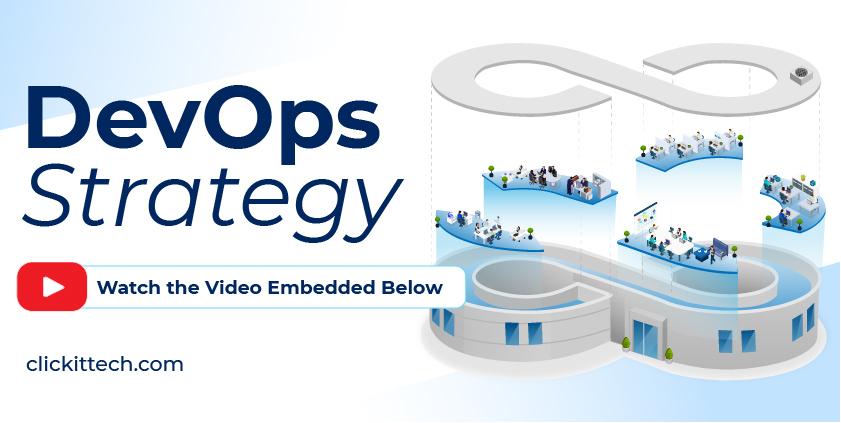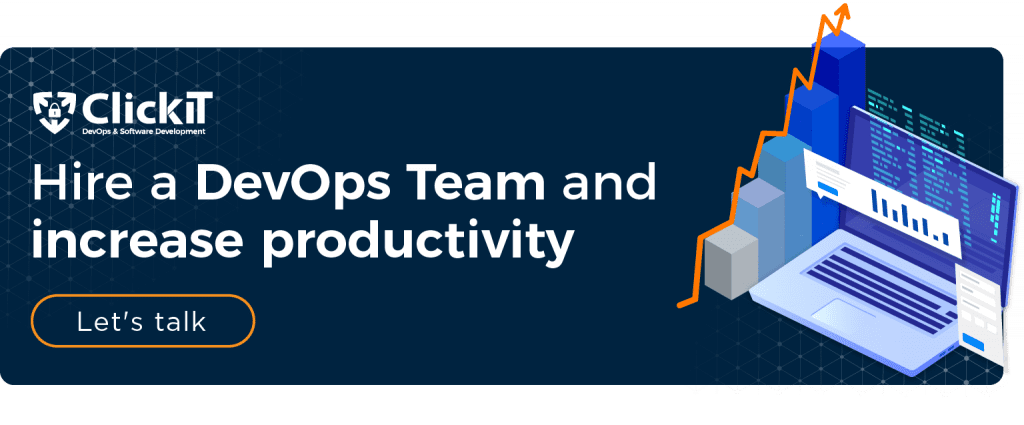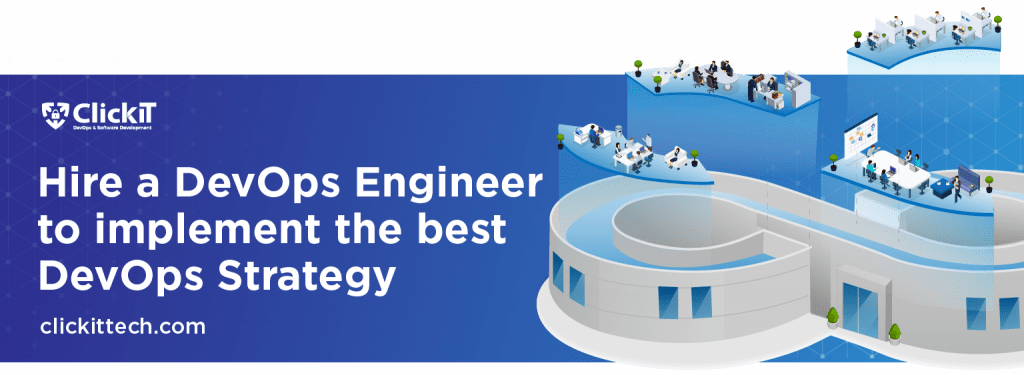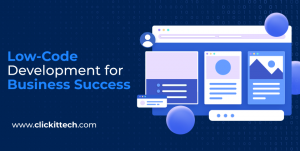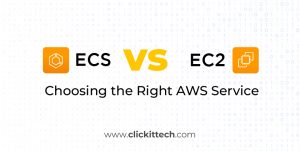“DevOps Strategy should be a customer-value-driven approach to deliver solutions using agile methods, collaboration, and automation,” says Gartner in its 2020 report of DevOps Adoption Frameworks. When we say DevOps, it means Development plus Operations. DevOps is nothing but an amalgamation of two IT wings existing in the industry for ages. It is a collaborative and unified effort between the development and the operations. Gone are the days when a developer used to write a code for days and then have to wait for hours to get it deployed. DevOps has been the game-changer in optimizing the entire effort of building and deploying the code. Efforts have come down from days to minutes.
When it comes to product and application teams, DevOps is more than a tool or a technology. DevOps is a culture that teaches individuals, teams, and organizations. The DevOps culture eliminates communication bottlenecks and tends to standardize the environments with robust automation. There are certain direct benefits that engineering teams can leverage by adopting the DevOps strategies:
✓ Faster code build (Continuous Integration)
✓ Faster code deployment (Continuous Deployment)
✓ Faster delivery
✓ Better product quality
✓ Reduced time to market
✓ Better productivity
✓ Better collaboration and teamwork
DevOps Engineer vs Software Engineer: What’s the difference? Read the full blog to find out.
Table of contents
- How DevOps helps Companies and Enterprises?
- Key DevOps Strategies
- DevOps Implementation Strategy and Evolution Model
- Step-by-step perfect DevOps Strategy
- To sum up! Eight high-level steps to get your DevOps Strategy right
- Frequently Asked Questions (FAQs)
1. How DevOps Strategy helps Companies and Enterprises?
DevOps can do wonders in an organization. A perfect DevOps implementation plan can bridge gaps between IT operations, development teams and the business. Adopting Agile and Scrum as the key DevOps strategy can enable businesses to work closely with the engineering teams.
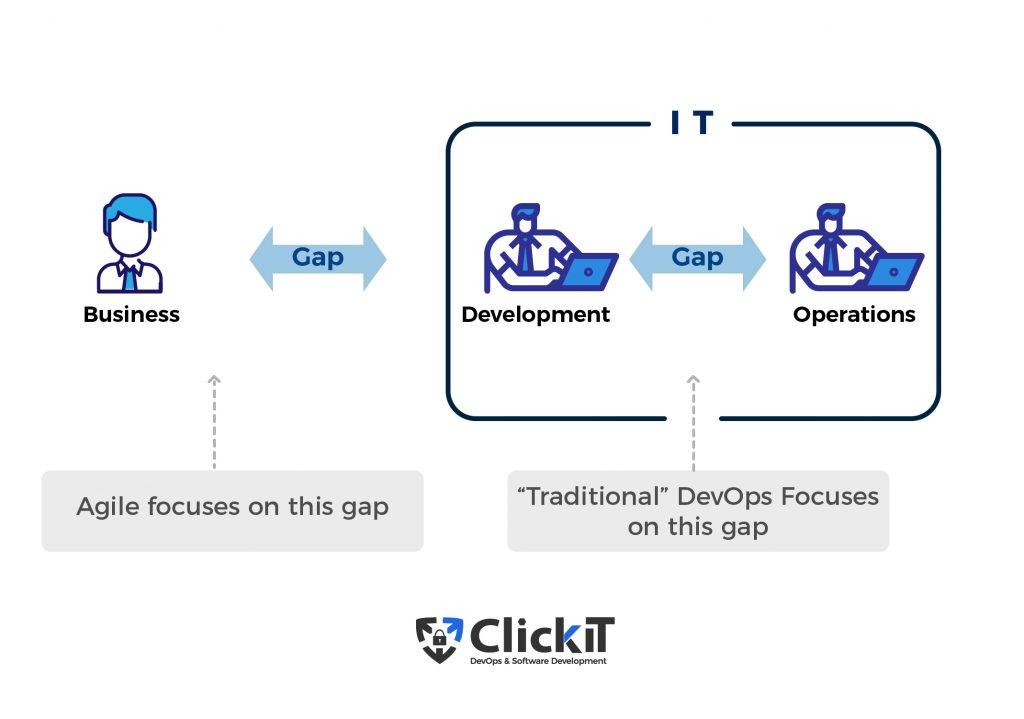
There are some key value drivers, which enable DevOps in any organization. Below is a self-explanatory list of these drivers:
✓ Agility
✓ Efficiency
✓ Stability
✓ Quality
✓ Security
✓ Employee Satisfaction
On the enterprise level, DevOps Strategy must be focused on customer value. Experts say that DevOps is not an IT activity; DevOps enables value. DevOps is the delivery of solutions to customers through efficient, effective value streams.
Read our slideshow How to Choose DevOps Companies in California USA to make a good choice.
2. Key DevOps Strategy
Few fundamental DevOps implementation strategies can be used to enable DevOps in any organization. Let’s take a look at all the ‘DevOps Enablers.’
2.1 Infrastructure-as-a-code and Automation
Infrastructure-as-a-code (IaC) is a blessing in disguise for IT administrators. Whether it is infrastructure management, provisioning, or configuration management, IaC is a compelling methodology to achieve automation in your IT infrastructure. The key objective of implementing IaC is to maintain the infrastructure in your desired state. Any deviation from the current steady-state should be handled automatically by the IaC solution.
Tools: Terraform, Amazon CloudFormation, Ansible, Puppet, and Chef are some popular IaC tools to enable infra-level automation in your organization.
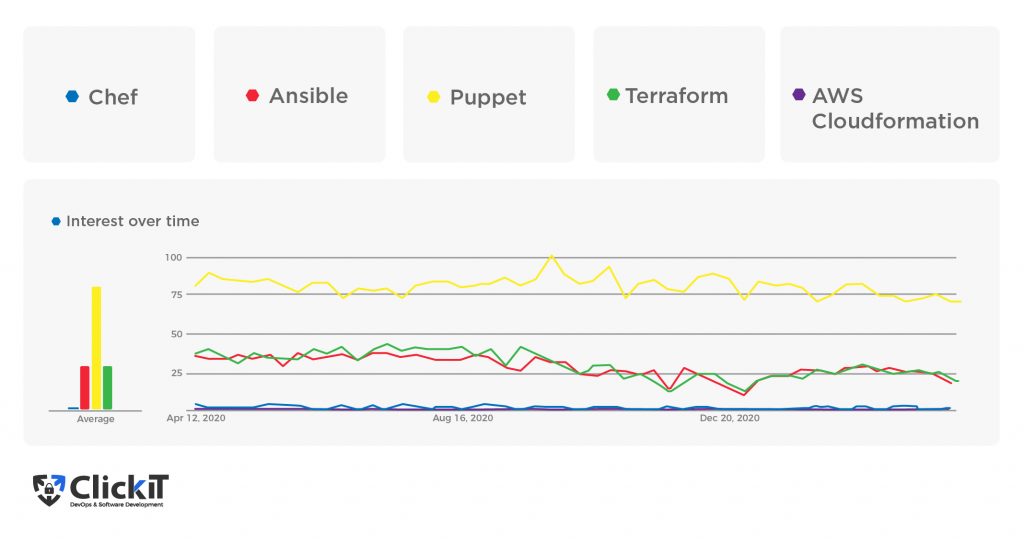
Which are the two most popular IaC tools? Learn about them with this blog!
2.2 Continuous Integration
CI is a robust practice to automate the operational tasks in development. Through CI, you can automate the integration of code changes and code build. Fast and automated systems are the core principles of a DevOps implementation strategy. Continuous integration allows developers to merge the code frequently and have more frequent code build and merge.
One of the significant benefits of adopting CI is that you will save ample time in the development cycle. It is also a great way to reduce the amount of time spent on fixing regression bugs and emphasize good code quality. Overall, a promising CI pipeline helps you better understand the codebase and the features that you are developing for the customers.
Tools: Jenkins, Gitlab, TeamCity, CircleCI.
2.3 Continuous Delivery
Continuous delivery or CD is a robust software delivery methodology that enables teams to develop high-quality software in a brief period. Continuous Delivery pipelines ensure that the software is released as per your schedule with minimum manual intervention. CD is a powerful DevOps release strategy aimed at building, testing, and releasing software with improved speed and frequency.
Tools: Continuous Delivery is not dependant on tools but a set of tools. Below is the list:
✓ Container: Docker
✓ Build: Ant, Maven
✓ CI: Jenkins, Bamboo
✓ Code Quality: SonarQube
✓ IaC: Terraform, AWS CloudFromation
✓ Monitoring: Nagios, Kibana (ELK)
✓ Testing: Cucumber, JMeter
On this video, we tell you the CI CD Benefits and the importance of continuous integration and continuous delivery process adoption. You can also check out our slideshow about the Best DevOps Automation Tools for CI/CD Pipelines.
2.4 Microservice architecture
Microservices is a new trend in the software market. They are small deployable services that are modeled around complex applications. A Microservice is nothing but a newer version of Service-Oriented Architecture (SOA). Microservices communicate with each other using different techniques, and they also have the advantage of being technology agnostic.
For more information, read this blog about Microservices and their comparison with monolith.
2.5 Kubernetes Clustering/Container Management System
Containerized application is the new normal DevOps release strategy as products move away from virtualized systems to containerized systems. Docker is a popular tool that helps DevOps engineers to build containers, and Kubernetes helps them orchestrate. Kubernetes is a potent tool that helps in managing the containers in the infrastructure. SaaS is one of the most favorable cloud models adopted across various industries. Kubernetes is a crucial player in enabling multi-tenancy on SaaS platforms.
Kubernetes also helps a lot in adding scalability factors to the infrastructure. Through Kubernetes, you can easily up-scale and down-scale your infrastructure, both vertically and horizontally.
Learn more about Kubernetes and other container management tools.
2.6 Rapid Feedback
DevOps is a culture, not a role. On top of everything, DevOps practices enable quick feedback loops between business, development, testing, and IT operations. DevOps enables the teams to be faster and more agile. This pace of development and operations ultimately manifests into a great product, and feedback loops are an irreplaceable part of the process. Rapid Feedback improves not only the products but also the processes. Let’s discuss this with the help of one example. A CI/CD pipeline is a simple example of a rapid feedback loop. Any change can be deployed immediately to the respective environment. When this CI/CD pipeline is integrated with testing, the feedback loop becomes more robust. Developers can keep a close eye on the defects and can fix them on the go. Eventually, this helps in reducing the overall turnaround time in the product delivery.
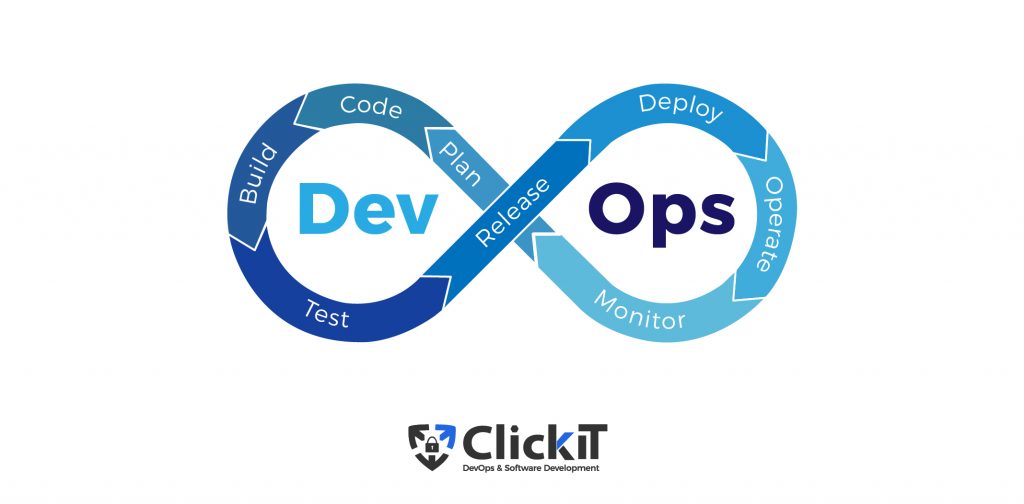
3. DevOps Implementation Strategy and Evolution Model
Teams adopting only a set of practices or a set of tools cannot enable DevOps. There is a need for structural and organizational changes to optimize the DevOps implementation strategy to help your team. The image below shows the Evolution Model of DevOps Strategy. The evolution model depicts that teams can gain autonomy with proper implementation.
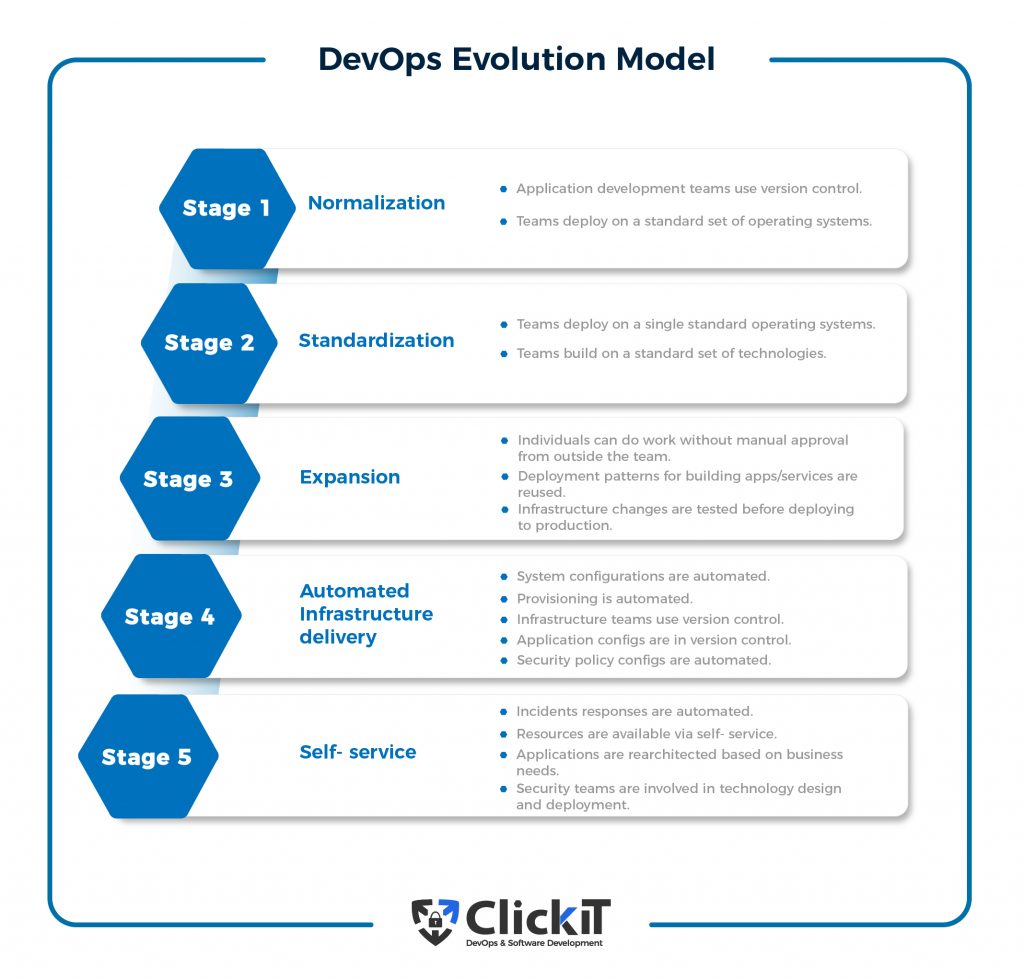
The first two stages of the model talk about introducing the right set of technologies to enable DevOps. Normalization involves the nascent stages of using continuous integration by the introduction of version control systems. Standardization talks more about streamlining the delivery and deployment model.
Stage 3 in the evolution model converges where the trust is built between Stage 1 and Stage 2. Teams are granted more autonomy, and deployments are streamlined. This is the point where teams can start collaborating across cross-functional teams beyond the boundaries of Development and Operations.
In stages 3 to 5, the coupling between systems and processes decreases, and the cohesion increase. Low coupling and high cohesion are some of the basic principles of Software Engineering. In these stages, the main focus is on automation. Teams can focus more on creating value for business and less on solving local problems.
This is what it means to adopt the different DevOps strategies. Empowering individuals with knowledge and experience and by automating the processes, you are optimizing yours at an organizational level and scale. This is the right time to focus on eliminating waste and focus more on achieving the business goals.
What does the Future of DevOps look like? Read this blog to find out.
3.1 DevOps Strategy Tool Chain
DevOps does not have a specific or fixed toolchain. Determining the right toolchain is a core functionality of DevOps Strategy Consulting. For each and every step in DevOps, there are multiple tools with multiple options. The key fundamental of choosing the right tool is to know your requirements, operating costs, and other factors. There are certain things that you should keep in your mind before deciding on the tools:
Operating cost: You should not tend to over-spend on the tools
Expertise: You should be aware of the skill-sets of your team. You should choose the tools with which your team is comfortable working.
Cloud provides: Tools depend a lot on your choice of Cloud Service Provider.
The tools should align with your organization’s compliance goals and other IT policies. They should also support your IT infrastructure and networking resources. Below are some DevOps tools which you should consider for the implementation of the DevOps strategy:
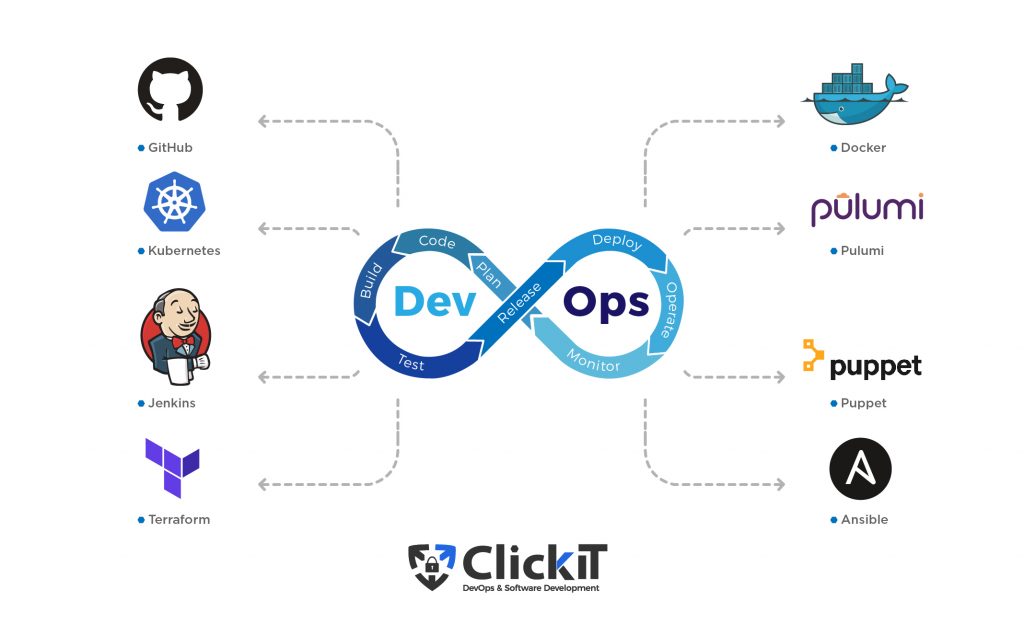
3.2 DevOps/Cloud Adoption Framework
Cloud is an imperative part of DevOps adoption. Usage of Cloud Service Providers to run applications has increased drastically in the IT and Software development landscape. As the ongoing demand for agile and rapid development increases, industries’ movement to the cloud is inevitable. AWS has been the market leader in PaaS and IaaS services. AWS has a dedicated framework that helps the customer to move to the cloud smoothly. AWS Cloud Adoption Framework (AWS CAF) is one of AWS’s unique features as its professional services. Before we go too much in detail, let’s look to Gartner’s Magic Quadrant, which clearly shows AWS as the market leader. This analysis also inculcates the thought to adopt AWS cloud to support the IT infrastructure.
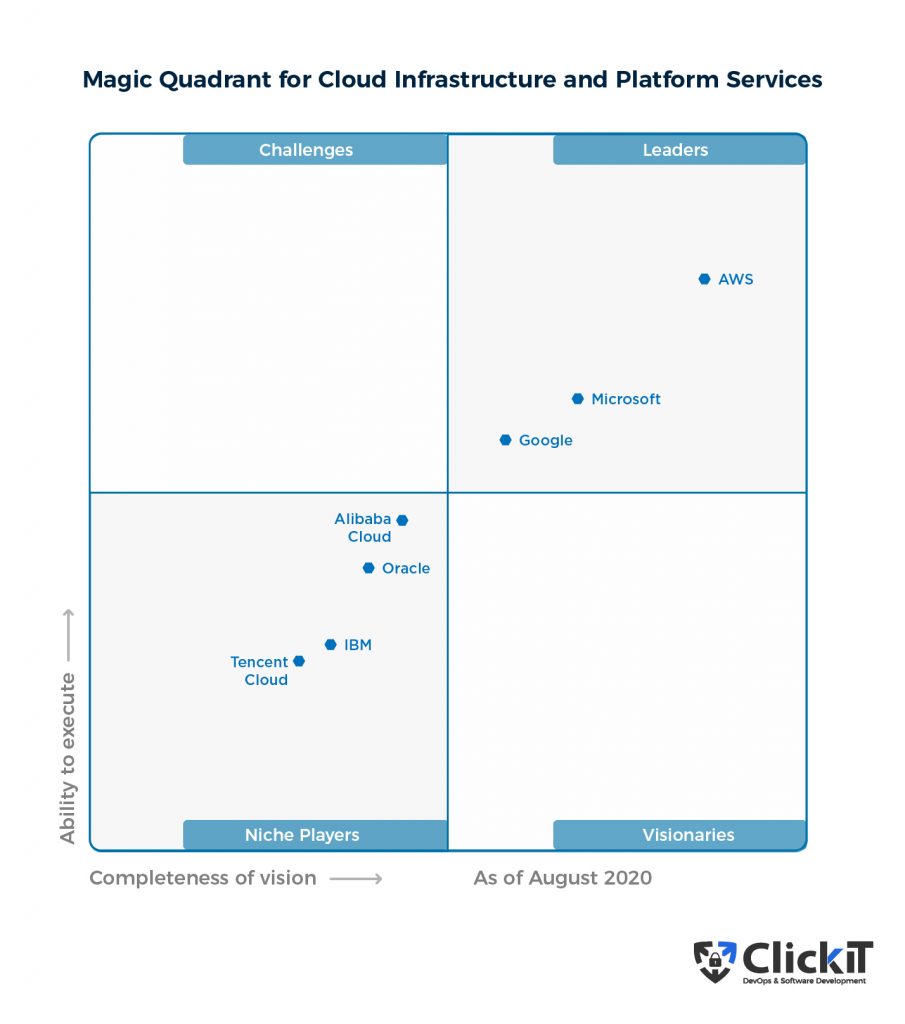
AWS Cloud Adoption Framework helps organizations to develop and execute highly effective plans for the cloud adoption journey. AWS CAF provides the right guidance and a comprehensive approach to move IT organizations to the AWS cloud. This ensures immense business benefits and faster cloud adoption with lesser risk.
The Cloud Adoption Framework also helps organizations in quickly understanding the cloud adoption techniques. It allows them to identify the gaps and the risks when it comes to adopting cloud practices. The significant benefits of Cloud Adoption Framework are:
✓ Increase in the agility of running the business.
✓ More economical as Cloud Service Providers have a pay-as-you-go model.
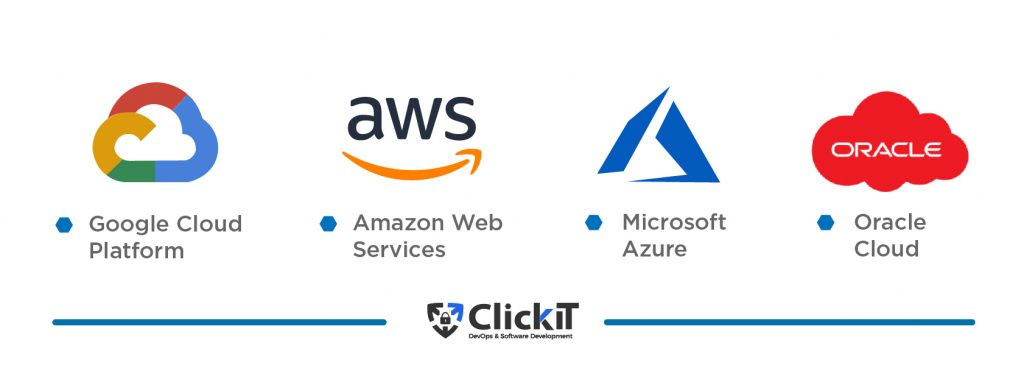
Step-by-step perfect DevOps Strategy
Once you have decided that you need to implement DevOps in your organization, you should plan. A well-defined plan is an integral part of your DevOps implementation strategy. Below are some of the critical step-by-step DevOps implementation strategies:
1. Find a cloud service provider
The first step is the most crucial. You need a cloud service provider who has all the capabilities and services to run your application. Service providers like AWS, Microsoft Azure, Google Cloud Platform, etc., provide a highly available and robust infrastructure to run your applications.
Why the AWS cloud is the best cloud service provider? Find it out in this article!
2. Design your software architecture
A well-designed architecture is the backbone of a good and successful product. Adopting DevOps strategies can ensure you adopt the leading software architectures like Microservices and Serverless architectures. Once you have a proper design in place, the rest of the phases involved in the software development lifecycle, like development, testing, etc., become easy. Serverless architecture is resonating all across cloud-based applications. For serverless architectures, the cloud providers allocate resources to run your application. With Serverless architecture, you need to worry only about your code. Services like AWS Lambda, Azure Functions take care of all the underlying infrastructure like OS, VMs, etc.
Microservice is another great software architecture model. Big applications are broken down into small services. These small services are lightweight in nature and hence build, deploy and maintenance becomes easier. Containerizing the application using Docker is a wonderful technique to create microservices. It isolates your service and makes sure that the product is loosely coupled and highly cohesive.
3. Incorporate 12-factor methodology
In today’s world, software is usually delivered as a service. Developing successful software and products needs certain assurances like security, portability, etc. There is a well-defined 12-factor methodology developed by experts who have worked on thousands of product development tasks. These factors are:
✓ CodeBase: A good code-base to track the software versions and revisions.
✓ Dependencies: Loosely coupled and isolated systems.
✓ Configuration: Store and manage a uniform configuration using config management solutions.
✓ Backing Services: Treat backing services as attached resources
✓Build, release, run: Separate build, deploy and test stages using DevOps principles.
✓ Process: Core processes to have optimized build, deploy and test mechanisms.
✓ Port binding: Export services over the network using port binding.
✓ Concurrency: Scale up the different process models.
✓ Disposability: Maximize the output of the product with low operational turnaround times.
✓ Dev/Prod parity: Maintain a similarity in Development, testing and production environments.
✓ Logs: Proper log monitoring with event streams.
✓ Admin processes: Run admin/management tasks as a core process.
Also read: How to use the Twelve Factor App Methodology?
4. Plan a container orchestration system
Products and platforms have slowly transitioned from virtualization to containerization. Docker is a very powerful tool for containerizing your applications. Once you include Docker in your infrastructure, it is imperative to have an orchestration tool as well. This is where container orchestration systems like Amazon EKS, Kubernetes, etc., come into the picture. They help manage the containers and help in other tasks such as deployments, monitoring, etc.
Here you have some useful readings to help you decide which container orchestration tool is better for you!
✓ Amazon ECS vs EKS
✓ Kubernetes vs ECS
5. Create a CI/CD pipeline
CI/CD is the core DevOps release strategy. Implementation of a successful CI/CD pipeline streamlines your build and deploy process. This results in a fast and rapid software delivery pipeline. CI/CD tools tend to automate your development, deployment, and testing process, decreasing the overall manual overhead on the product teams.
6. Look for areas to automate using IaC
Building infrastructure to run your product can be a cumbersome task. And when you have to do it again and again for several different environments. It becomes redundant and tiring. It is essential to have a similar setup in the dev, test, and prod environment. This is where Infrastructure-as-Code tools like Terraform come into the picture. They automate the environment provisioning, thereby resulting in a considerable reduction in infrastructure provisioning time and efforts.
7. Security and Compliance
PCI-DSS, HIPAA, SOC1, SOC2, ISO, etc., are essential certifications and attestations required to have a successful product in regulated industries like finance and healthcare. It not only helps to build trust in your customers but also increases the sellability of your product. Implementation of DevSecOps principles ensures better security in your DevOps process. A basic example of DevSecOps can be OWASP vulnerability scan on your codebase every time your run a Continuous Integration Jenkins job. This process will make sure that your code and product are free of all security vulnerabilities.
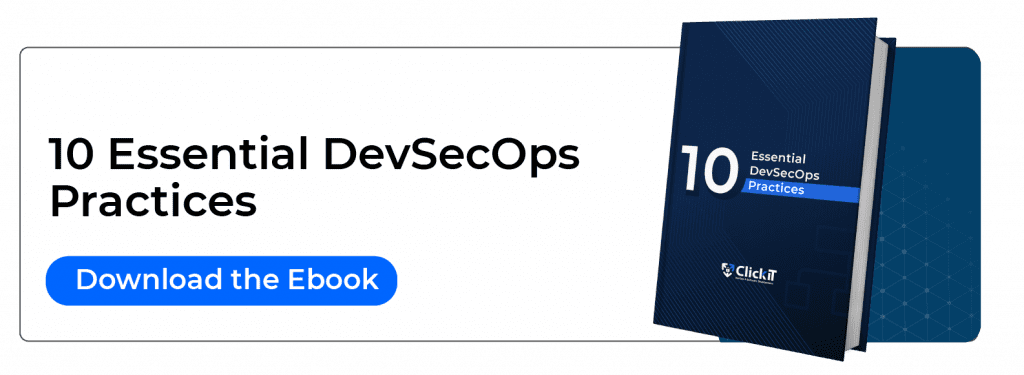
You can download our free PCI Compliance checklist!
8. Support, maintenance, and incident response
What happens next when you have developed and sold a product?
Answer: Support and maintenance come next.
Your successful DevOps strategy should have a resilient Support Framework. Well-defined SLA & SLOs on a contractual level inculcate trust among your customers. A proper incident response plan promotes a smooth customer experience. Incident Response plans should have well-defined timelines. For instance, Sev 1 incidents will be resolved in 4 hours, Sev2 in 8 hours, and so on. IR plans should be integrated with a proper RCA (root cause analysis) as well. All a customer needs at the end of an incident lifecycle is a proper RCA.
Read our blog SRE vs DevOps
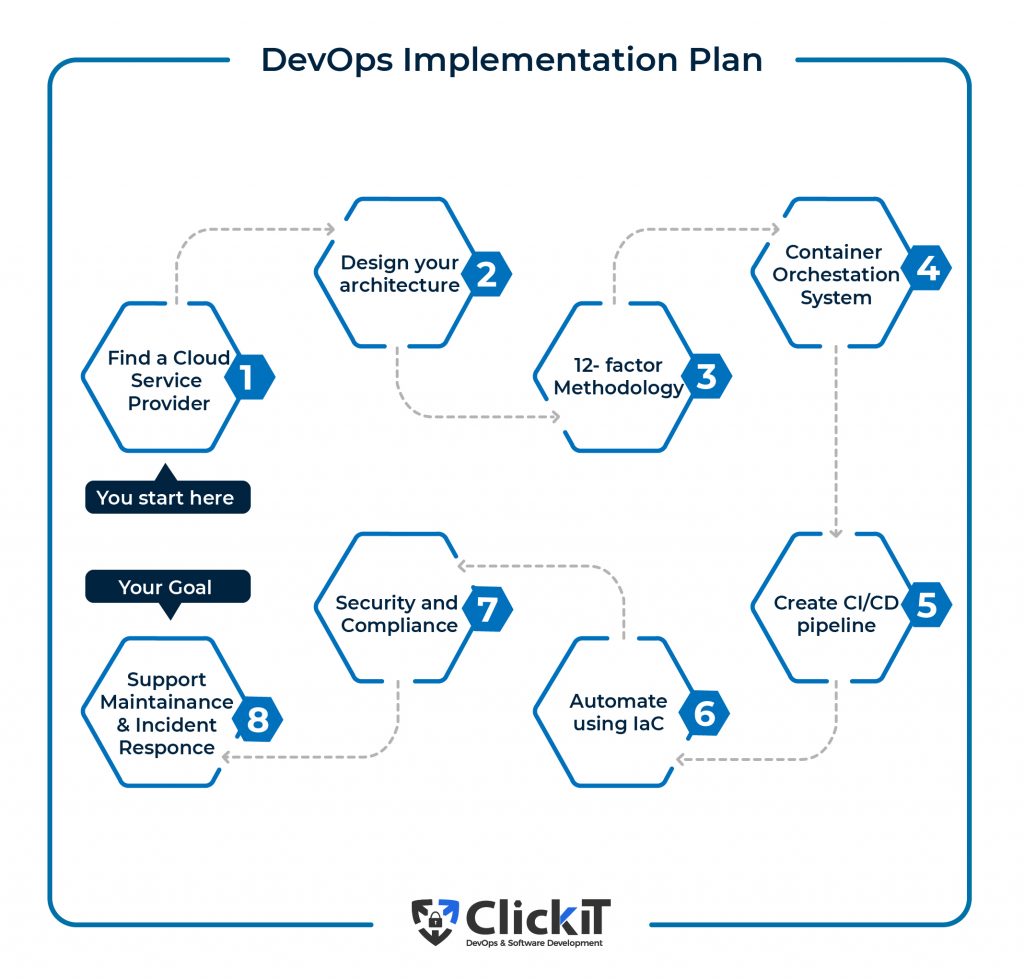
To learn more about DevOps strategy check out our updated video of How to Create a Cloud Native Architecture
To sum up!
Eight high-level steps to get your DevOps Strategy right
The adoption of the DevOps strategy is summarized in eight high-level steps. If you get them right, you get the DevOps implementation plan right. Identify the Business Justification.
Step 1. Define DevOps for your organization.
Step 2. Create a cross-functional team.
Step 3. Develop shared objectives and metrics.
Step 4. Select the first-mover application.
Step 5. Focus on eliminating the most significant constraints.
Step 6. Develop the toolchain.
Step 7. Scale when ready.
Step 8. If you get these steps right, there will be no stones unturned in your journey to a successful DevOps implementation strategy.
An added value for a successful strategy: implement the right DevOps Trends.
DevOps Strategy FAQs
DevOps Strategy is nothing but a well-defined plan you should follow to introduce DevOps in your organization. There are multiple strategies mentioned in this blog that you can follow to adopt DevOps practices in your organization.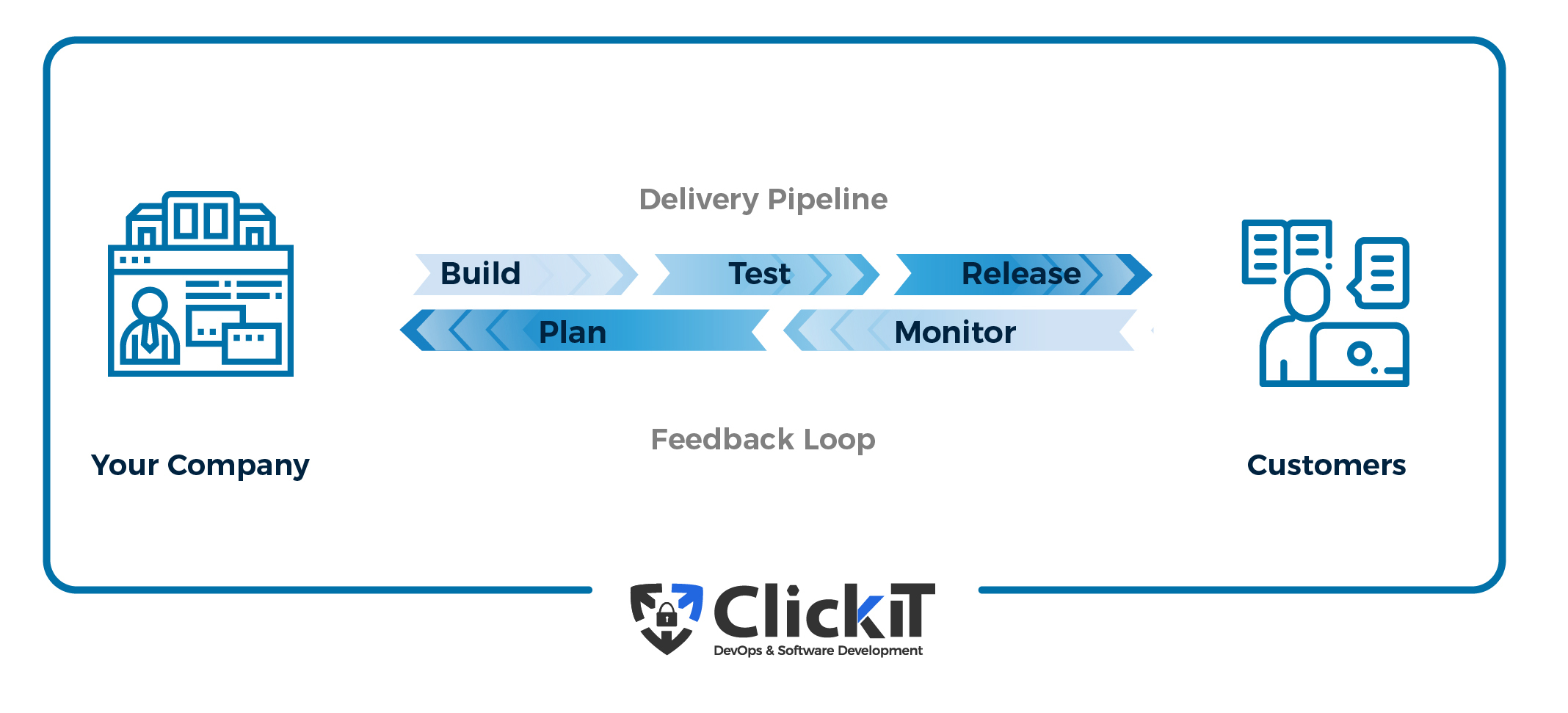
Below is the list of some of the famous DevOps tools:
Container: Docker
Build: Ant, Maven
CI: Jenkins, Bamboo
Code Quality: SonarQube
IaC: Terraform, AWS CloudFromation
Monitoring: Nagios, Kibana (ELK)
Testing: Cucumber, JMeter
DevOps implementation is a journey. There will be multiple steps involved in your journey to DevOps. There are multiple implementation principles that you can adopt, some of them are listed above in this blog.
Below are some of the principles for successful DevOps culture:
Fast collaborative environment
Impose end-to-end responsibility
Encourage Continuous Integration
Automate Everything
Focus on Customer Needs
Continuous and Faster delivery
Unite Teams

